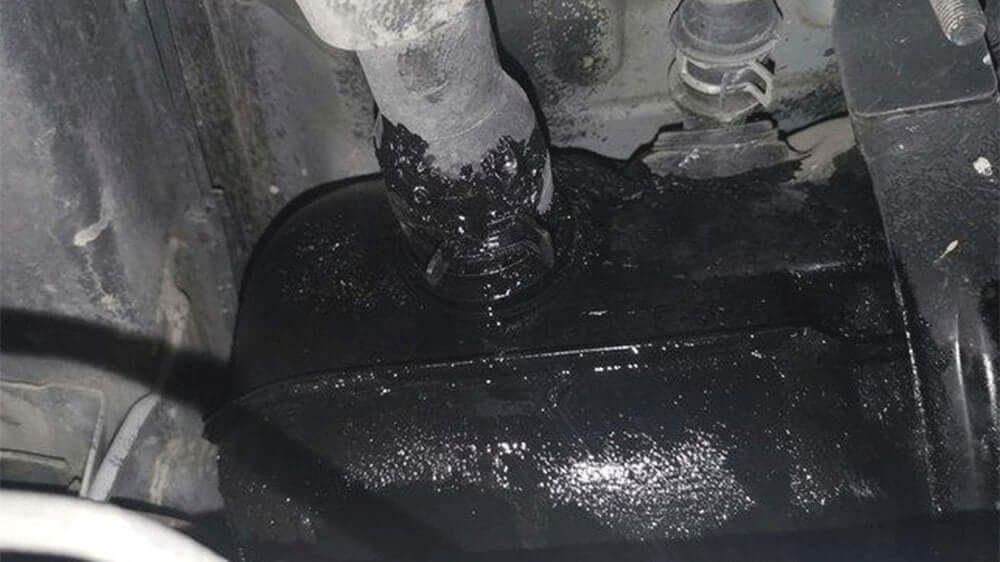
Why Is My ABS Light On? Common Causes Explained
What is an Anti-lock Braking System (ABS)?
The Anti-lock Braking System (ABS) is a crucial safety feature in modern vehicles, designed to prevent wheel lockup during hard braking scenarios. By modulating brake pressure, ABS allows drivers to maintain steering control while reducing stopping distances on slippery surfaces. This system comprises several intricate components that work in concert to enhance vehicle safety and performance.

Common Reasons Your ABS Light Is Turned on
The ABS warning light on your dashboard is more than just a benign indicator; it serves as a critical alert that something may be amiss within the braking system. Understanding the common triggers for this light can facilitate timely interventions, ensuring both safety and optimal vehicle functionality.
Faulty Wheel Speed Sensors
Role of Wheel Speed Sensors in ABS:
Wheel speed sensors are integral to the ABS mechanism. Positioned at each wheel, these sensors monitor the rotational speed of the wheels, relaying this data to the ABS control module. By assessing discrepancies in wheel speeds, the ABS system can determine when to modulate brake pressure, preventing wheel lockup during emergency stops.
Symptoms of Malfunctioning Sensors:
When wheel speed sensors malfunction, the ABS may misinterpret wheel rotation rates, resulting in erroneous activation of the ABS light. Symptoms of faulty sensors include uneven braking, a noticeable increase in stopping distance, and, in some cases, the activation of the traction control light. Drivers may also experience a pulsating brake pedal, indicating that the system is attempting to compensate for erroneous data.
Problems with the ABS Module
Functions of the ABS Control Module
The ABS control module acts as the brain of the system, processing signals from the wheel speed sensors and managing brake pressure accordingly. It ensures that each wheel receives the appropriate amount of braking force, maintaining stability and control during aggressive braking maneuvers.
Signs Indicating Module Failure
Failure of the ABS control module can be catastrophic, often resulting in the activation of the ABS warning light. Symptoms include unresponsive brakes, erratic brake pedal feel, or the inability to engage ABS during hard stops. If the module fails, it may necessitate professional diagnostics and potentially costly repairs, making it imperative for vehicle owners to be vigilant.

Issues with Brake Fluid Levels or Quality
Importance of Proper Brake Fluid Levels:
Brake fluid is essential for the hydraulic system that operates the brakes, including the ABS. Low brake fluid levels can lead to insufficient hydraulic pressure, compromising the system's ability to function effectively. Therefore, maintaining proper fluid levels is paramount for ensuring optimal braking performance.
How Contaminated Fluid Affects ABS Performance:
Contaminated brake fluid can severely impair ABS functionality. Moisture and debris can lead to corrosion within brake components, resulting in diminished responsiveness and increased wear. Additionally, contaminants can alter the fluid’s boiling point, causing brake fade under extreme conditions. Regular fluid changes and inspections are essential to mitigate these risks.

Wiring and Electrical Issues
Common Electrical Faults Affecting ABS:
The ABS relies on a network of wiring and electrical connections to function correctly. Common electrical faults, such as damaged wiring or corroded connectors, can disrupt communication between the ABS control module and its sensors. Such disruptions may trigger the ABS light, indicating a malfunction that requires immediate attention.
Diagnosing Wiring Problems:
Identifying wiring issues often necessitates a thorough visual inspection, looking for signs of fraying, corrosion, or disconnections. Utilizing a multimeter can aid in diagnosing circuit continuity. If electrical issues are suspected, professional assistance may be required to conduct a comprehensive diagnostic analysis.
Brake System Malfunctions
Connection Between ABS and Traditional Braking Systems:
The ABS operates in conjunction with traditional braking systems. It enhances braking performance by preventing wheel lockup, yet it relies on the fundamental braking system to function correctly. If there are underlying problems with the brake pads, rotors, or calipers, these can adversely affect ABS performance, necessitating a holistic examination of the braking system.
Identifying Brake Issues That Trigger the ABS Light:
Common brake issues that may trigger the ABS light include worn brake pads, warped rotors, or low brake fluid levels. Recognizing these signs early can prevent further complications, ensuring that the ABS operates effectively when needed. Regular inspections and timely repairs are crucial to maintaining the integrity of both the ABS and the traditional braking system.
Regular Maintenance of Brake Components
Importance of Routine Brake Inspections
Regular maintenance is essential for sustaining the health of the ABS and overall braking system. Routine inspections can identify potential issues before they escalate, ensuring that components such as brake pads, rotors, and fluid levels are in optimal condition. Adhering to manufacturer recommendations for maintenance schedules can significantly enhance vehicle safety.
Recognizing Early Warning Signs
Awareness of early warning signs can prove invaluable. Unusual noises, such as grinding or squeaking during braking, changes in pedal feel, or the illumination of dashboard warning lights should not be overlooked. These indicators often herald impending issues, warranting immediate investigation to avert more significant, potentially dangerous failures.

Conclusion
The activation of the ABS light serves as an essential alert to potential braking system issues. By understanding the common causes behind this warning, including faulty sensors, module problems, fluid quality, electrical faults, and general brake system malfunctions, vehicle owners can take proactive measures. Regular maintenance and vigilance can ensure that the ABS functions effectively, enhancing safety and performance on the road. Prioritizing the health of the ABS not only fosters peace of mind but also significantly contributes to overall vehicle safety.















































































